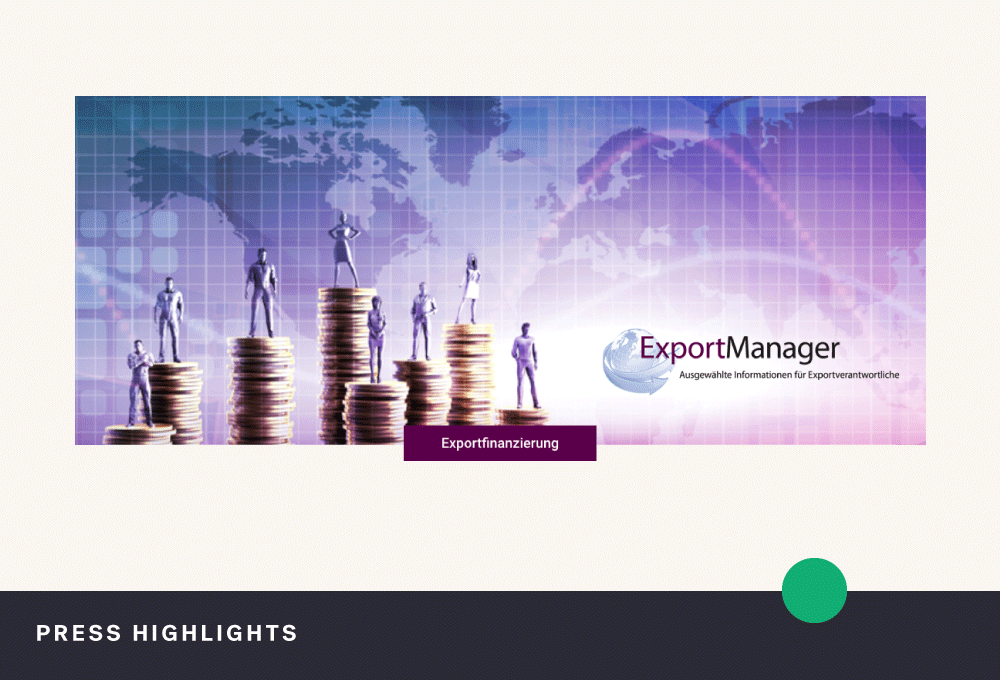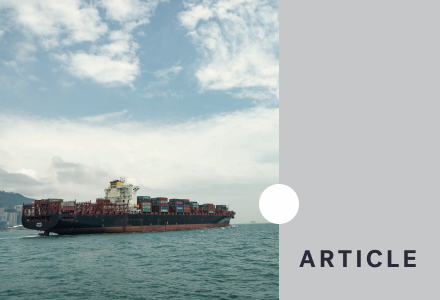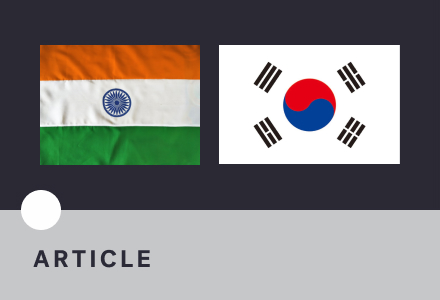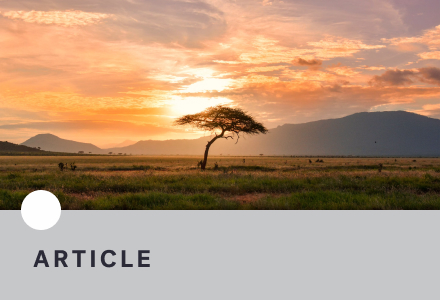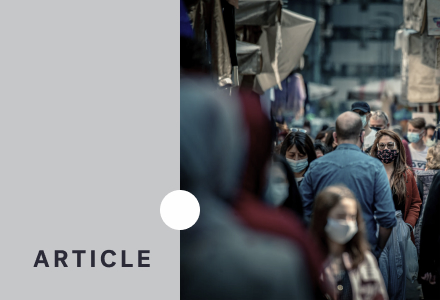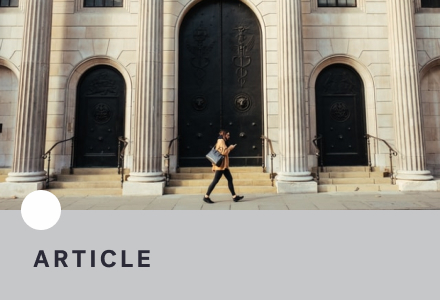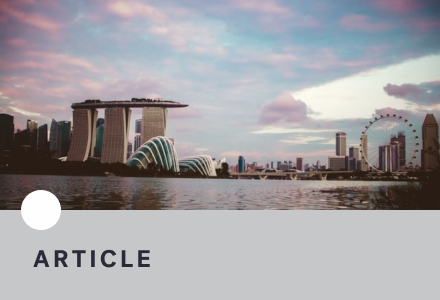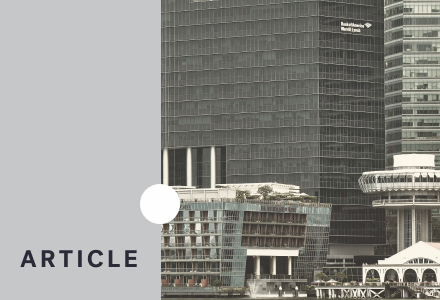Today’s trade finance is still surprisingly manual. Outdated email, with multiple attached spreadsheets fly around the world, chased up by numerous, time-consuming phone calls. In an interview with ‘Export Manager’, Milena Torciano, CEO of Mitigram, and Christian Zürcher, Sales Director at Mitigram, explain the platform that is part of the global journey in digitalizing trade finance.
Export Manager: Digital platforms are marketplaces that bring together supply and demand for standardised products. How have you managed to digitise trade finance?
Milena Torciano: Trade finance is a very complex area to digitise. It spans more than 100 markets with different legal systems, different regulatory frameworks, different cultures and different people. It is extremely difficult to find a common standard, common technology and infrastructure, and truly streamlined processes. We've come a long way in realizing our vision: we now have more than 200 leading multinationals, commodity traders and most of the world's largest trade finance banks using Mitigram.
Over the past two years, we've invested in developing more trade finance execution capabilities to make transaction management seamless. And making the control processes companies need when executing trade finance transactions frictionless. What’s more, we have just received certification from SWIFT. This means that Mitigram is now one of only five platforms in the world fully certified for SWIFT exchanges between banks and corporates.
Export Manager: With digital business models, it's often the case that the winner takes all. Will your platform be that winner, garnering the most support from exporters, banks and institutions?
Milena Torciano: The trade finance market has never seen a common market acceptance. SWIFT is the only technology that truly unifies trade finance globally. Everything else is very fragmented, and we don't see one platform catching on and becoming the absolute standard. Hopefully, the International Chamber of Commerce (ICC) is pushing forward with standardisation of documents. But then the carrier of that information really shouldn't matter. And that's the philosophy behind Mitigram. We don't want to lock companies into a particular information carrier.
Export Manager: The way you connect customers or exporting companies with banks facilitates access to trade finance, overcoming a lack of trade finance due to information deficits. Is that the thinking behind Mitigram?
Milena Torciano: When a company needs to find a counterparty to cover its risks, it is a very creative moment. This is where the company has to work with its partner banks to find the best solution, the best access, the best coverage that really enables the trade. That's a very critical moment.
But today, data is exchanged via email and hidden in spreadsheets. The limited capacity of companies and banks is changing every moment of every day.
Often, you have to discover that hidden risk taker who can help you with the transaction. You may not have a point of contact, or time to send hundreds of emails and make 200 calls. Very large commodity traders may have teams around the world trained to do this, but in most companies it's not the core business. They need to keep things running and they need a platform that helps them access information, gets them the best counterparty, and gives them the real-time data on the market situation. So that's the focus of Mitigram: to create more transparency and more liquidity in the market.
Export Manager: The administration and documentation associated with the global trade is immense. How can this be integrated into your platform?
Milena Torciano: The ICC is making great progress. It’s trying to define a form of digital trade agreement. But this will take a long time because it needs to be accepted at the local level. So it's not enough that we define a standard; property rights must also be legally recognised. We need to support trade as it is today, while working toward the vision of paperless trade we all aspire to.
Export Manager: Export credit agencies (ECAs) are another part of the process, with their own digital solutions for taking on the political risk. Are you integrating those into your platform as well?
Milena Torciano: Yes, we already have a number of export credit agencies registered with Mitigram. We accept banks, credit insurers and development finance institutions. They all play a role, especially when it comes to the trade finance gap. It's huge. It was huge before the pandemic, and it's getting bigger and bigger, and it's expected to reach $3 trillion after the pandemic.
That's the real problem that the market has; the banks are focusing on the top clients and leaving the rest of the market unserved. We are seeing that more and more. The banks may not be in a position to take on the risk, that the customer wants to get covered; but these banks may help their customers to find other banks on the platform that could.
We're talking to hundreds of banks around the globe. They all have an appetite, all want to do business and they all want to grow. They're quite often not getting the transactions they'd like to see. It's an inefficient market where supply and demand don't match. And that's where Mitigram really makes an impact.
Export Manager: You've introduced new modules to your platform this year: Open Market Discovery and MitiManger (formerly known as Transaction Manager). Do these modules bring a broader range of services for exporters to arrange customised financing?
Milena Torciano: Yes. Open Market Discovery most directly, because an exporter may have three, ten or thirty banks, depending on its size. Through our module, 150 or more banks are available to the exporter.
Of course, these banks may not have the capacity , or they may not have a business relationship with the exporter, or they may not have a ‘Know Your Customer’ (KYC) process finalised on the requesting exporter. But it creates an open market, where an exporter can look outside of its banking pool for capacity for certain risks.
And that's where we're really growing with emerging market banks; they're more willing to cover risks closer to home: risks in North Africa, in sub-Saharan Africa, in Southeast Asia, or in South Korea. The question is: Can you find the hidden risk taker in the market? Because if there is a risk, there is usually a risk taker and a price for this risk. But you have to find it. And that's what Mitigram facilitates.
The second module is MitiManager, previously called Transaction Manager. When you free up resources, improve controls, and streamline your communications, you simply make your processes better. And when you’re not spending time manually typing documents into systems, manually reviewing them, manually logging into bank portals, and downloading files and PDFs, you have more time to find solutions.
Export Manager: What modules are you are planning for the future? Is there such a thing as a module that addresses the requirements of different countries? After all, export financing in China requires different processes and poses different legal issues, than in South Africa or Brazil.
Milena Torciano: There is a high degree of standardisation at the level of certain trade instruments. Some areas may be slightly different, but that can be accommodated within the Mitigram structure. We don't see much need for customisation in terms of the type of tools; we target customers who tend to use standard instruments, and we cover the vast majority of them.
At the same time, covering export credit agencies is an important development area for us. We are already having exciting discussions about how Mitigram can digitise their processes.
Export Manager: Mr. Zürcher, can you tell us anything else about the instruments that are mapped on Mitigram?
Christian Zürcher: When we talk about short-term trade finance such as letters of credit and guarantees, we have the usual ICC rules such as UCP 600 (Uniform Customs & Practice for Documentary Credits; link), URDG (Uniform Rules for Demand Guarantees; link) and the like, which are very standardised. But for the most common short-term trade finance instrument, current account delivery, these international ICC standards do not exist. So if you supply 200 markets, you have 200 different jurisdictions to consider.
It’s why we have MitiManager. We started with the simple things, the export LCs, the guarantees, and will be opening up MitiManager to other instruments next year. Because even from an IT perspective, the whole thing is complex. And it gets even more complex when you talk about medium- or long-term ECA-covered financing. In most cases, if it's a buyer's loan, you have another bank doing the buyer's KYC check itself, but you don't have LCs, interim payments and counter-guarantees.
It’s still a huge individual manual task to create a semi-annual instalment loan for EUR 3 million under ECA coverage. For example, we can provide standards for the applications, and our form to fill in the data also fits for six half-year instalments. That is not a problem. But there are many specific details of a transaction in an ECA to consider. We plan to have this standardised on the platform by the middle of next year.
Milena Torciano: You may ask why this wasn’t done before. The answer is technology. Now these technologies are mature, cloud computing, API connectivity, AI - they just weren't available ten years ago. And we strongly believe that technology is affordable and should be affordable. We want to democratise access to technology for businesses of all sizes.
This is not for the lucky few, this is not just for the multinationals that can spend 200,000 EUR on a guarantee management system. It's for every company and every exporter who’s still stuck in manual processes and is ready for a seamless way to manage trade finance.
Editor’s note: Since this interview, Mitigram has revealed a new brand identity including some new solution names. Transaction Manager is now called MitiManager and their marketplace is now called MitiSquare.

